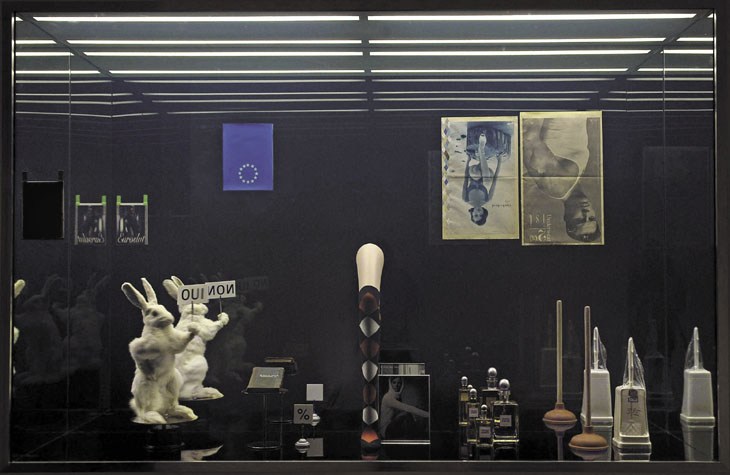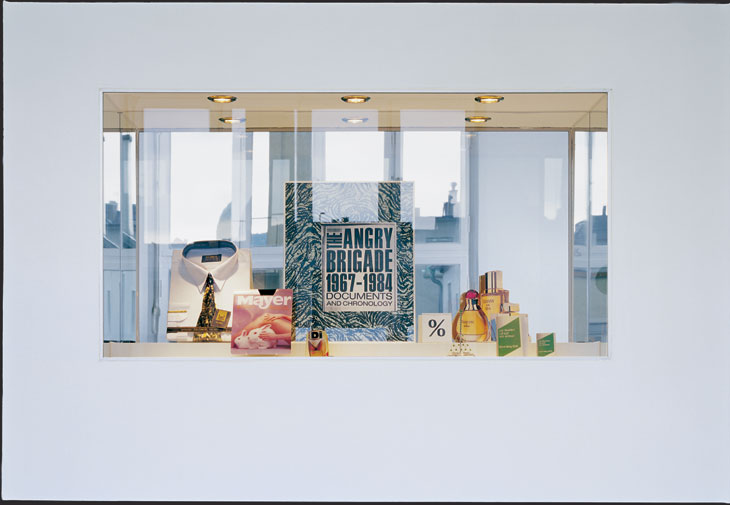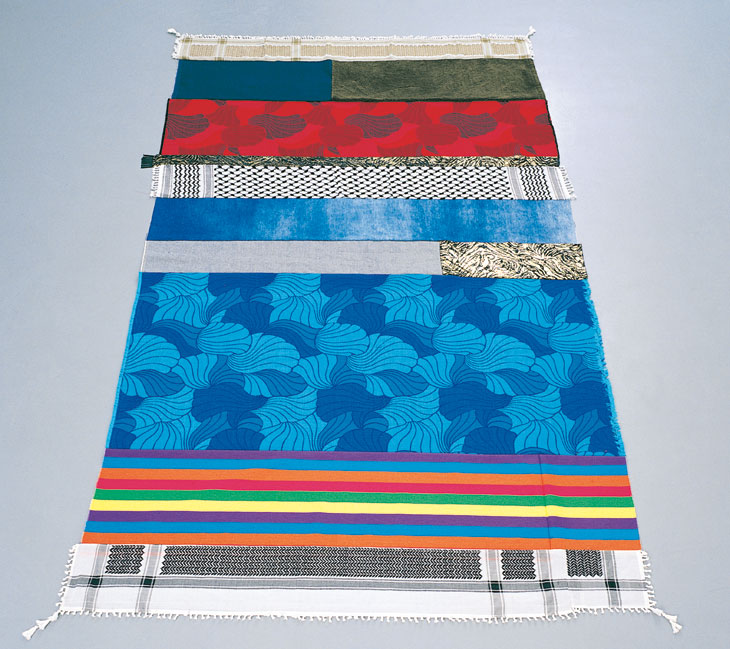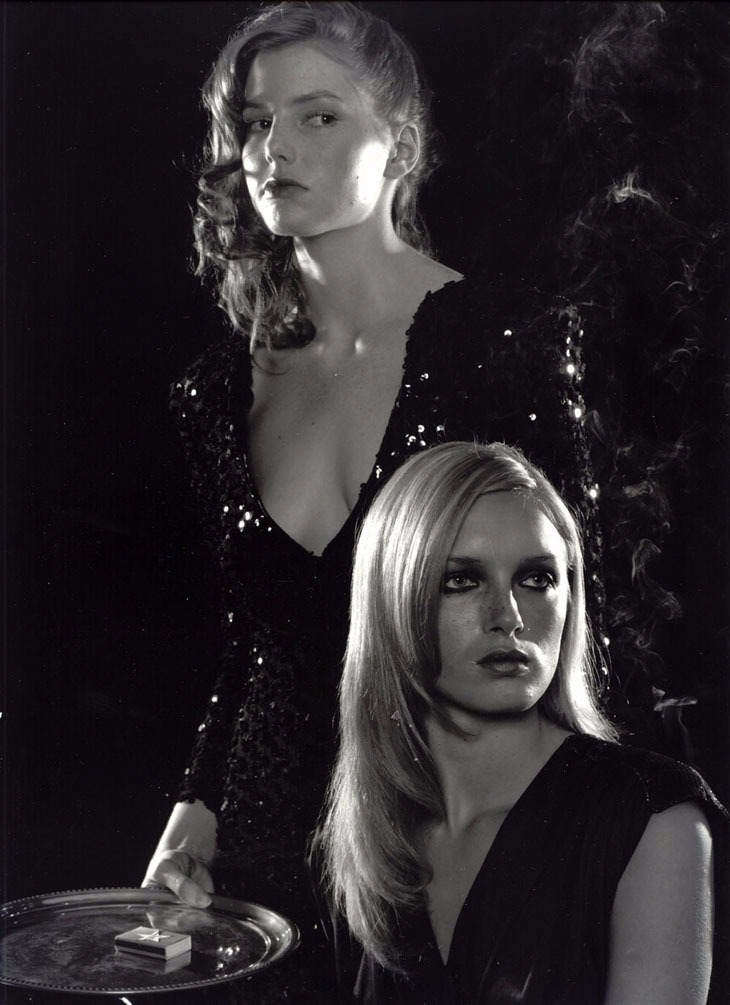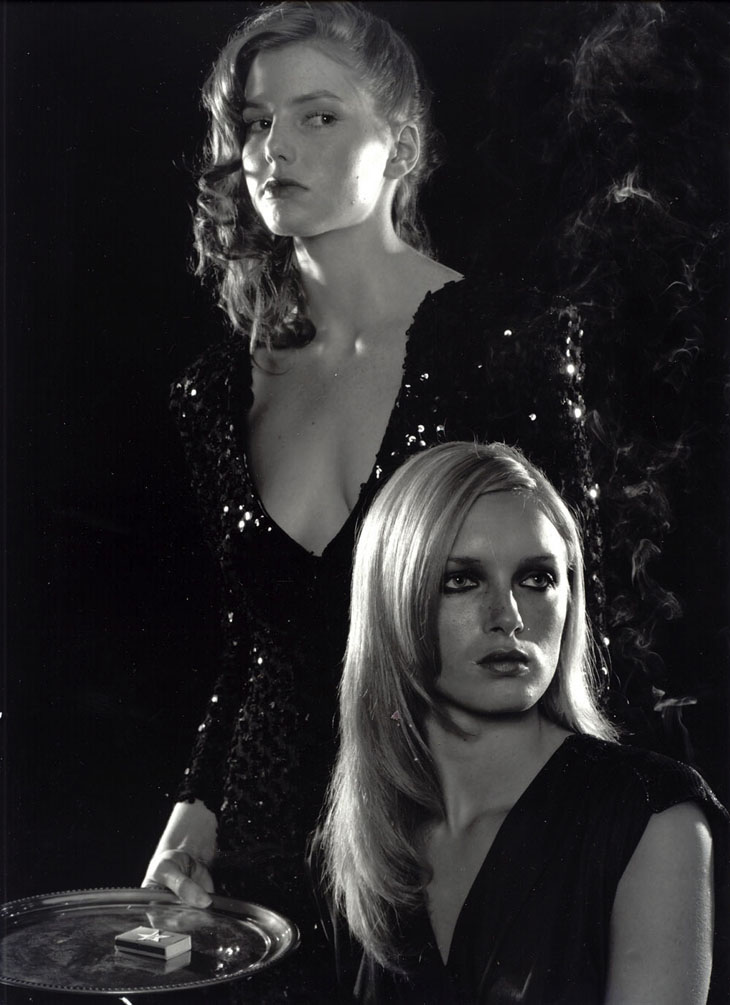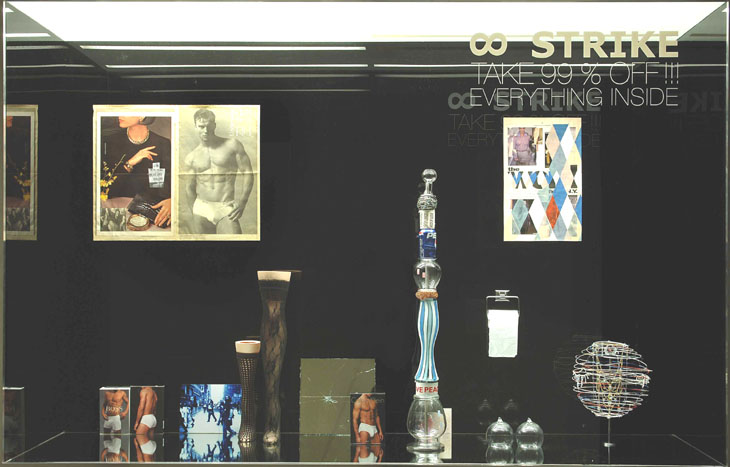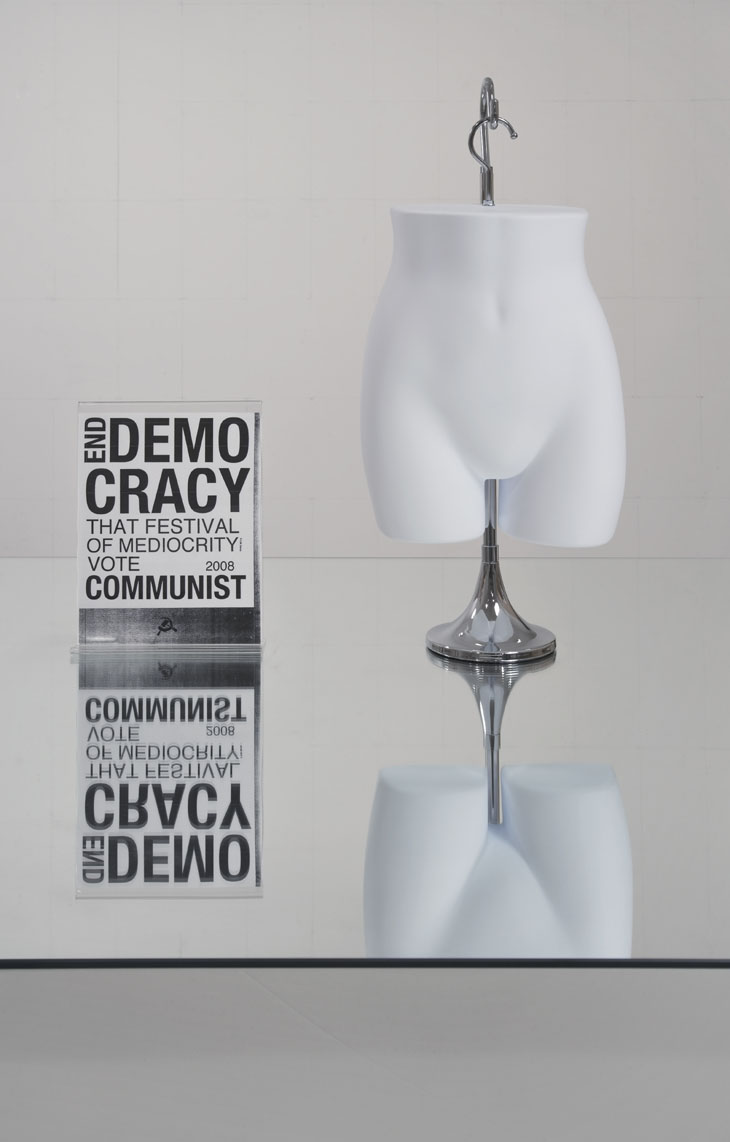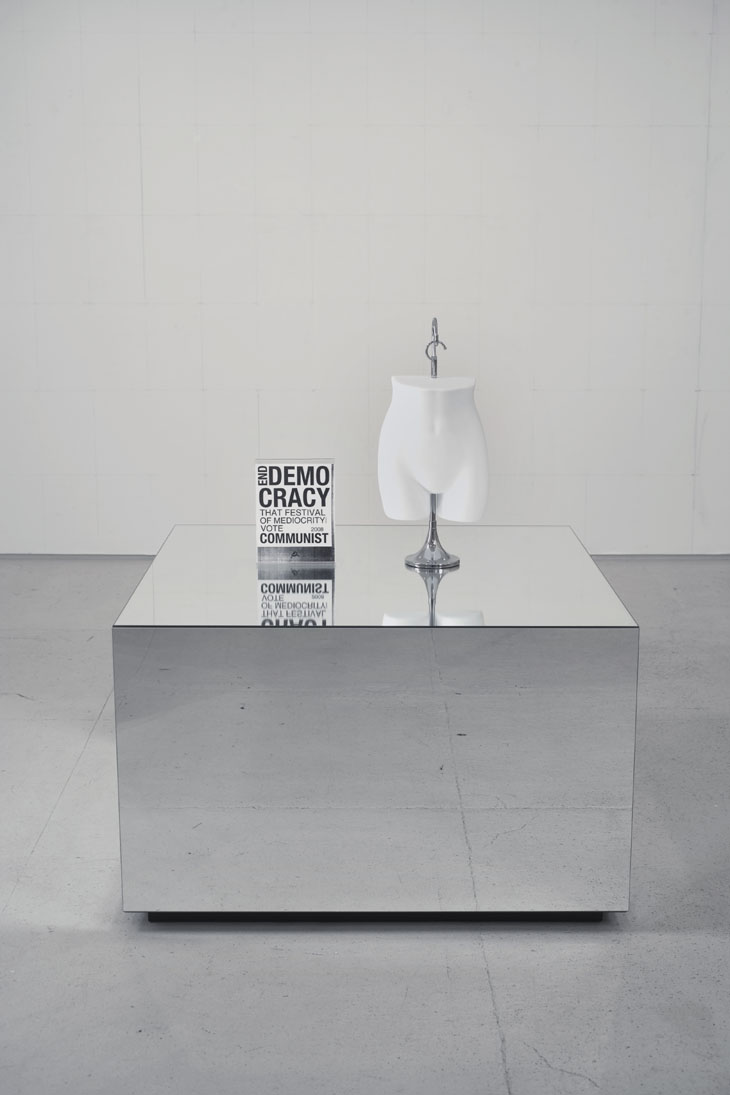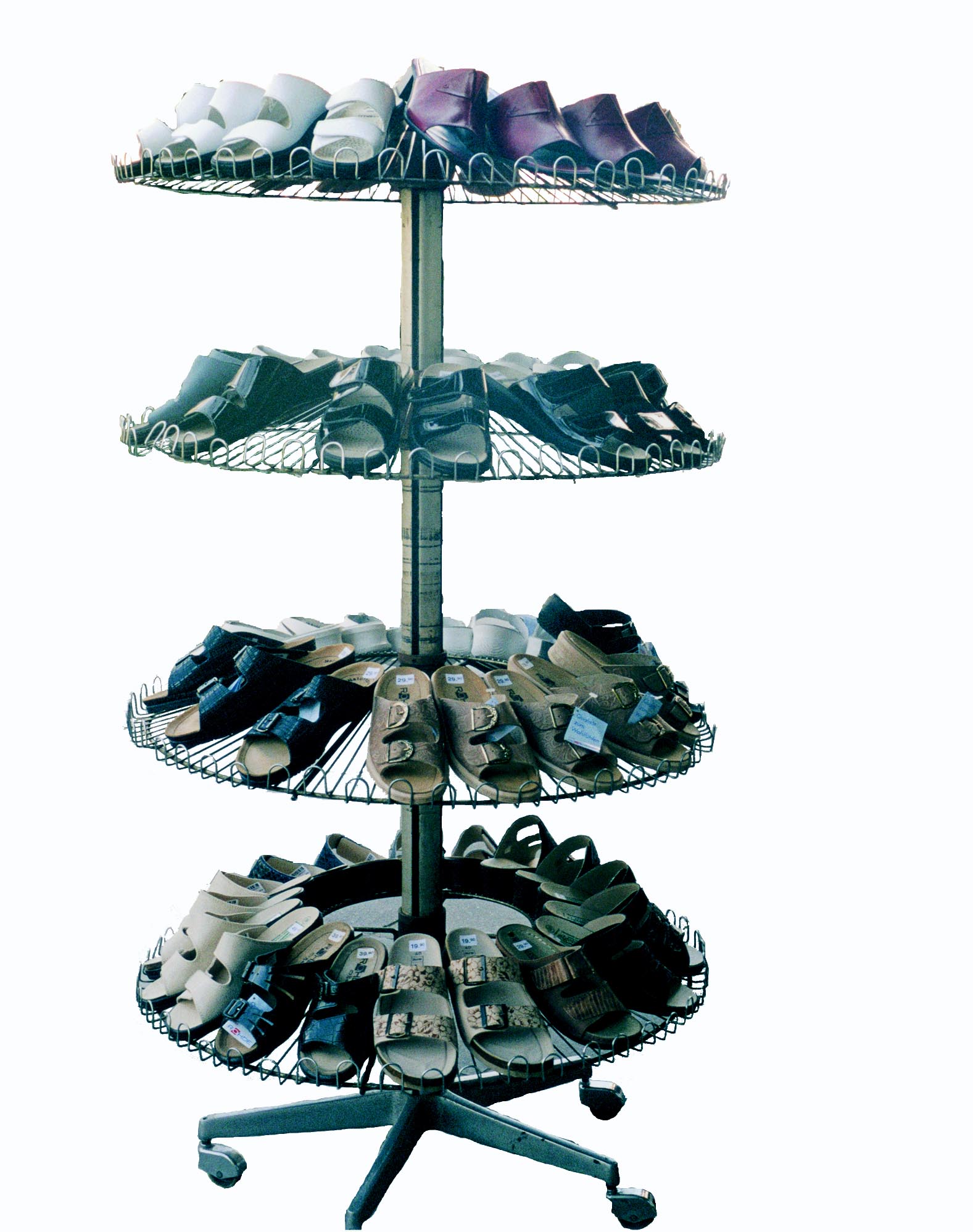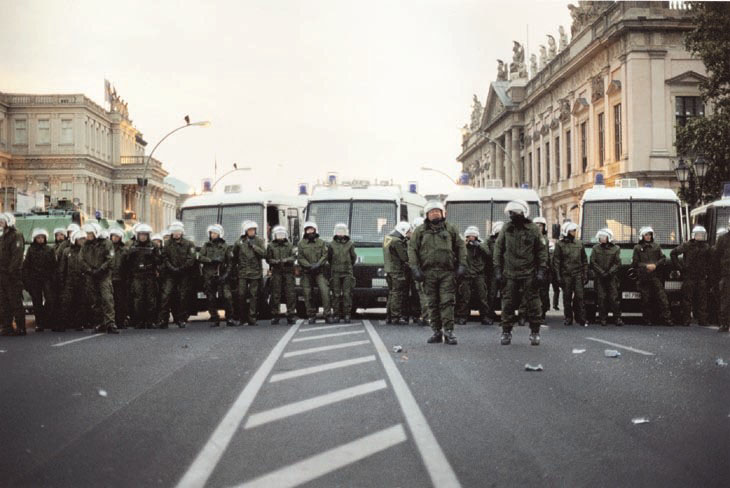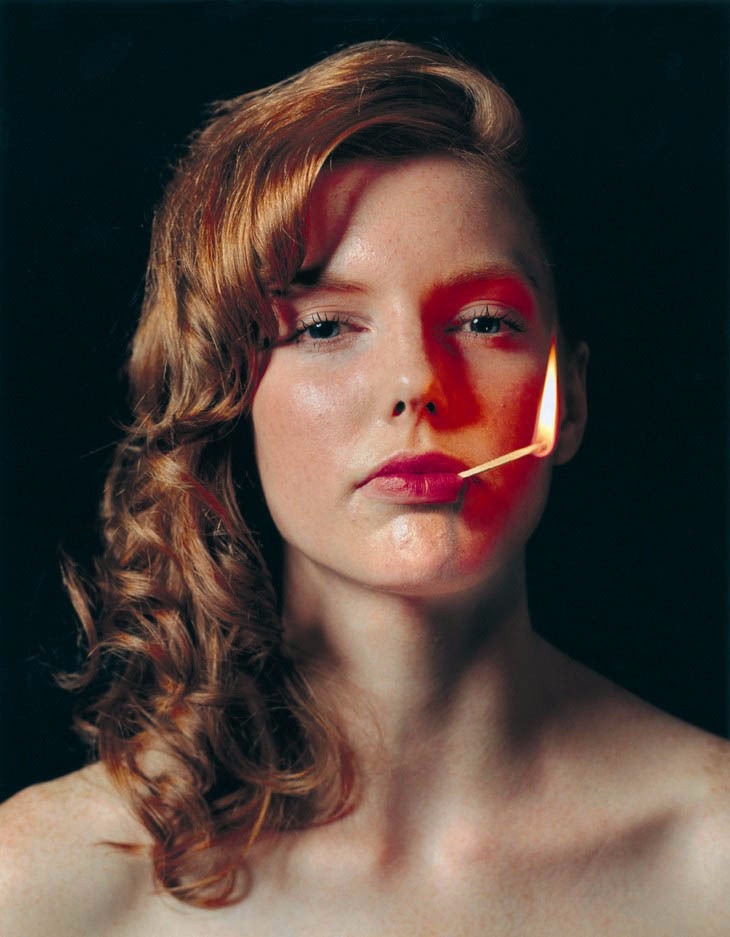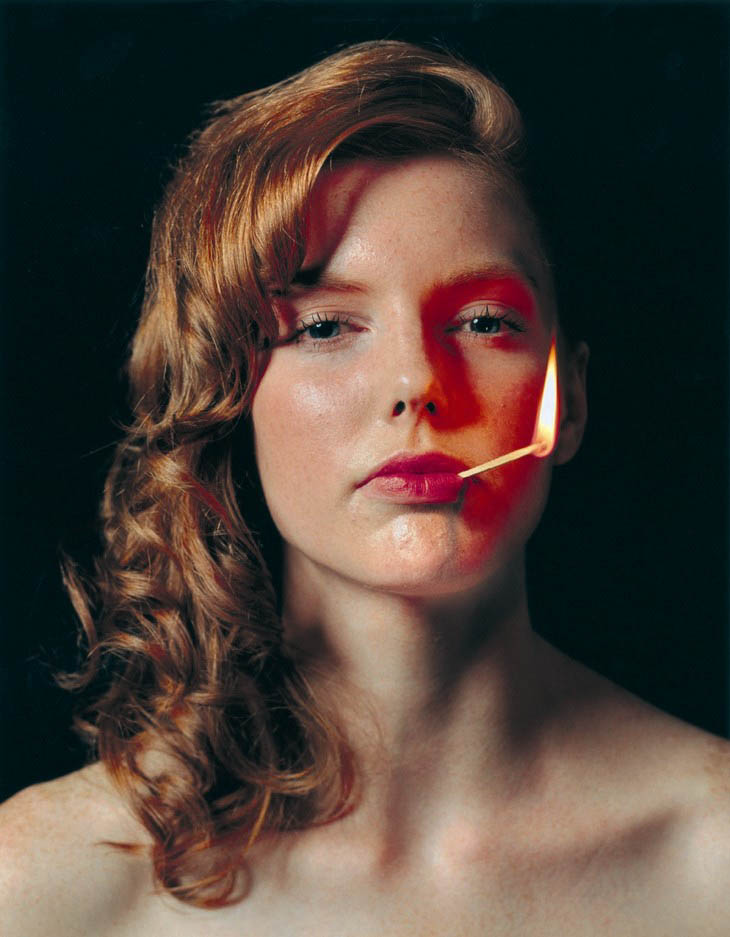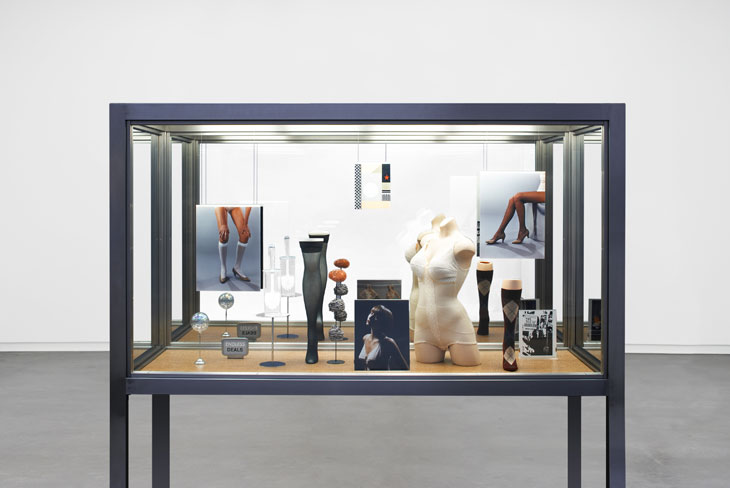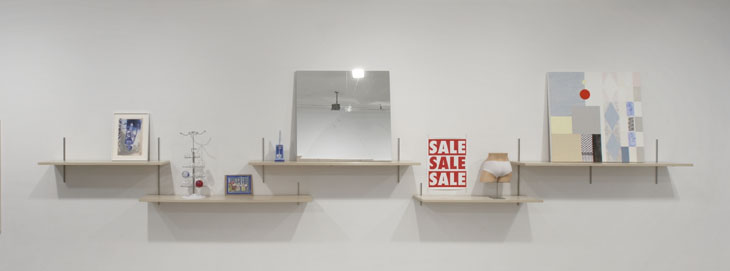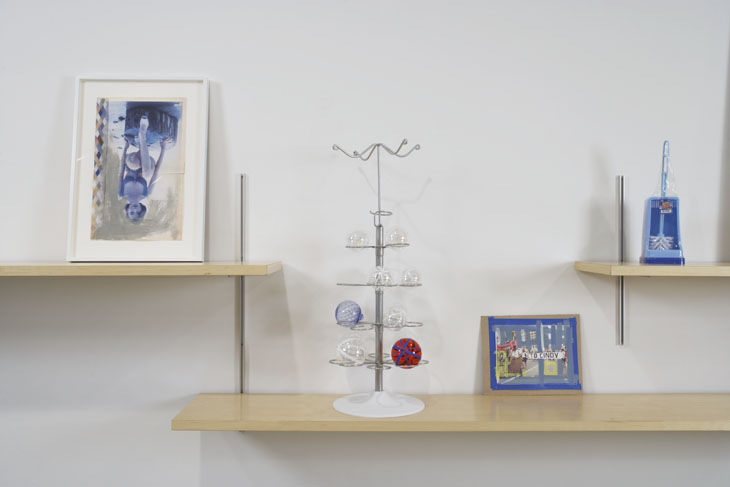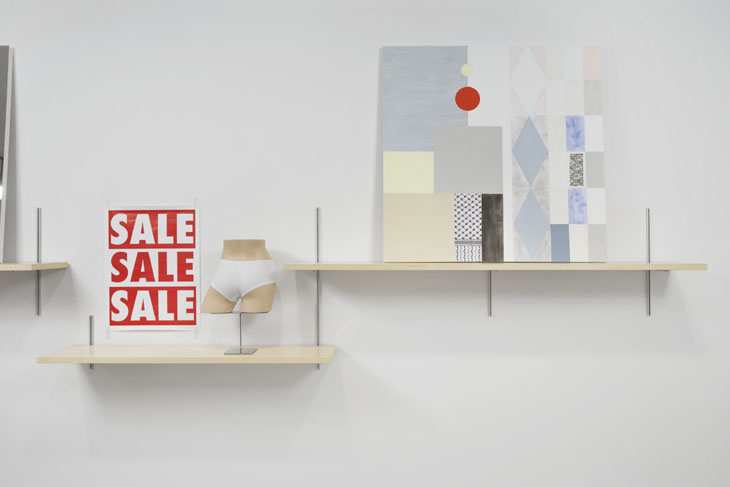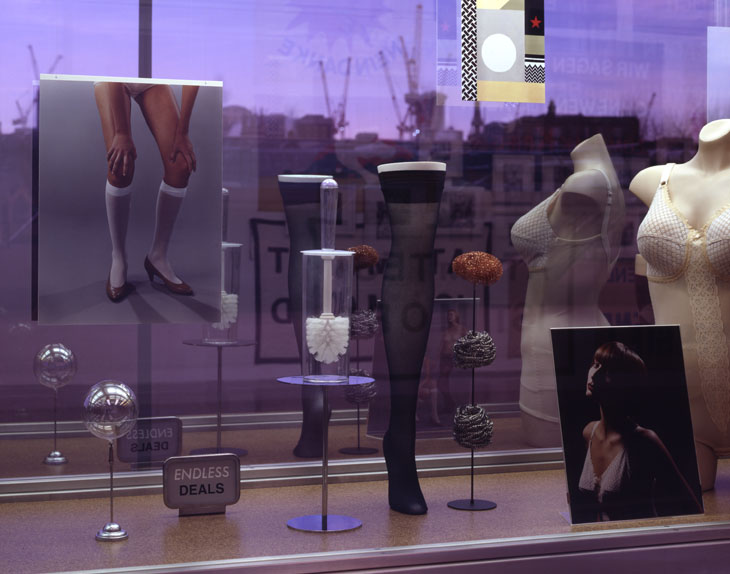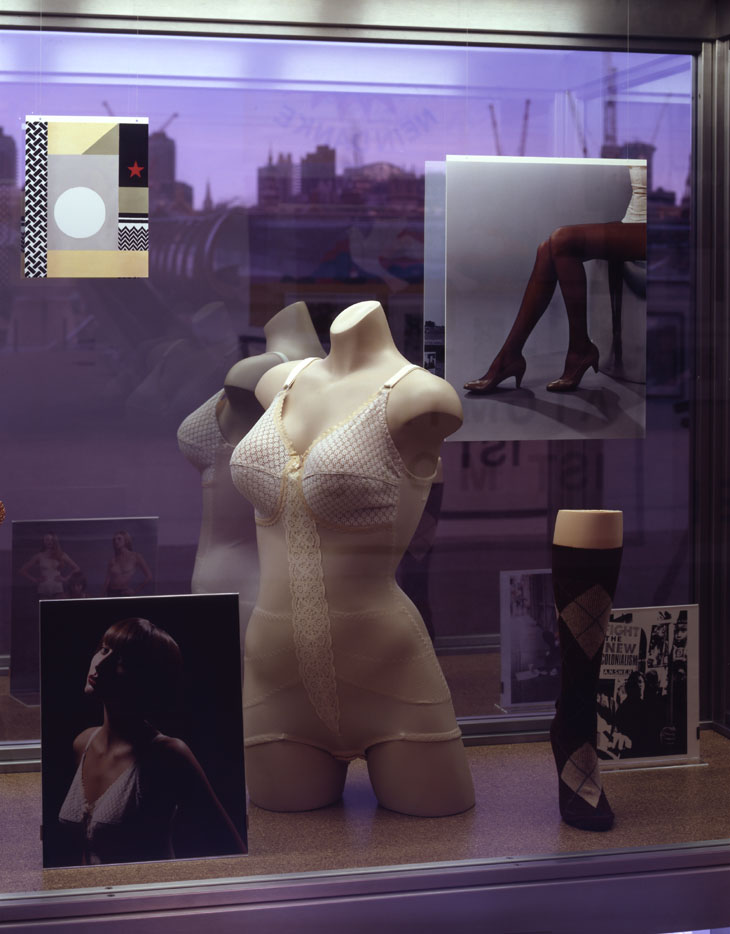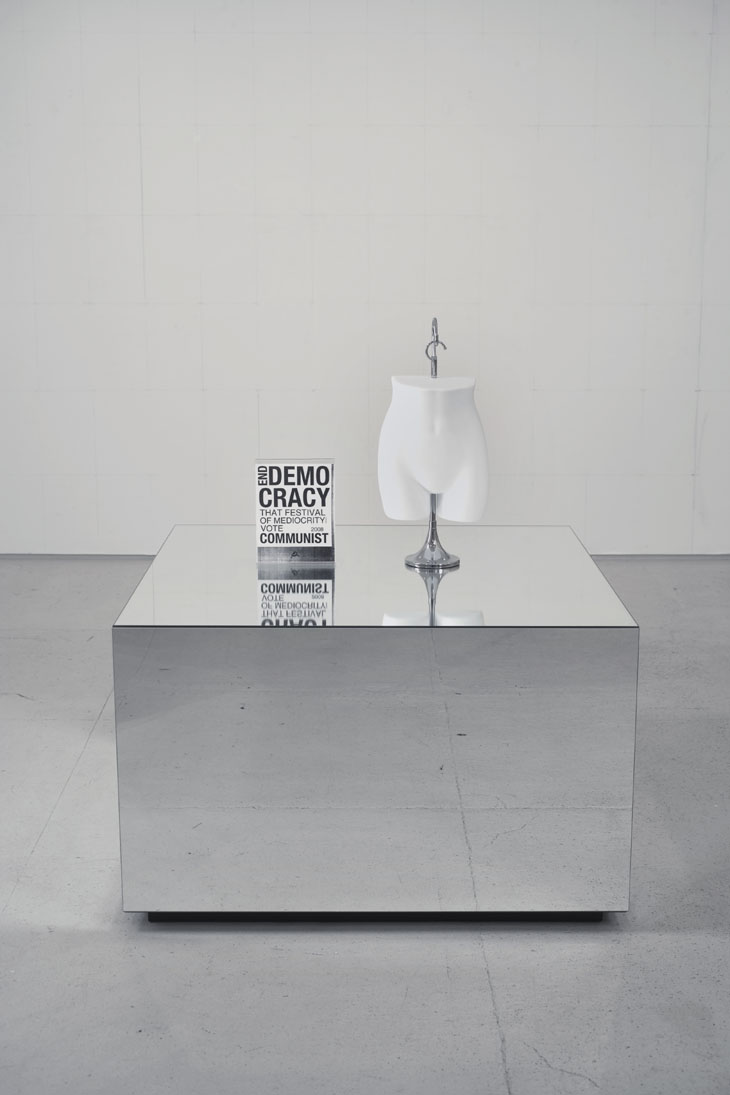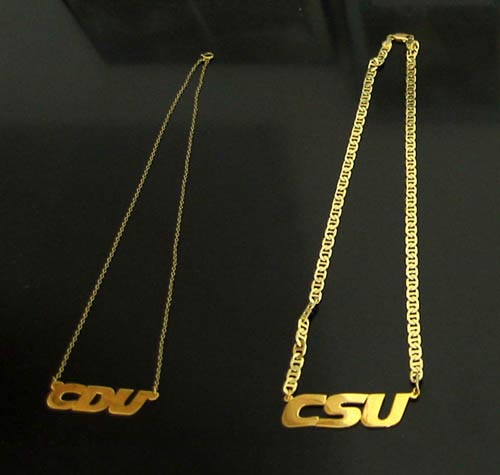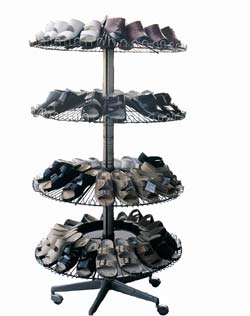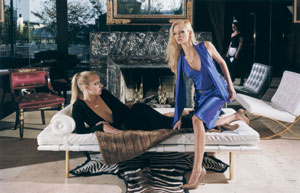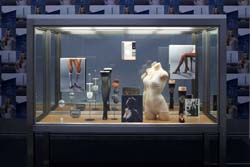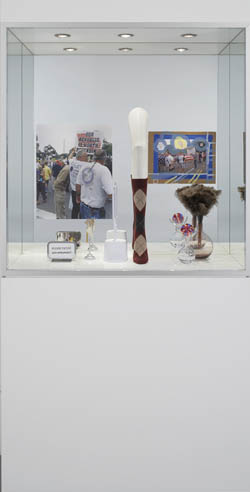
I Love Jesus
Josephine Meckseper

Josephine Meckseper, I Love Jesus, 2005
Aluminum, Plexiglas, glass, lights, C-print, metal display stands, plastic mannequin leg, argyle sock, found jewelry, gouache and tape on inkjet print mounted on cardboard, toilet brush, feather duster, acrylic on glass ball, glass vases
226.1 x 116.8 x 45.7 cm
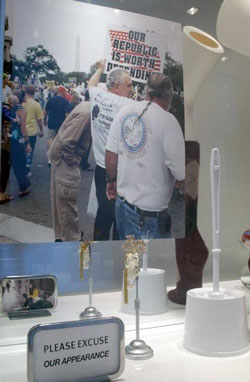
I Love Jesus
Josephine Meckseper

Josephine Meckseper, I Love Jesus, 2005
Aluminum, Plexiglas, glass, lights, C-print, metal display stands, plastic mannequin leg, argyle sock, found jewelry, gouache and tape on inkjet print mounted on cardboard, toilet brush, feather duster, acrylic on glass ball, glass vases
226.1 x 116.8 x 45.7 cm
Josephine Meckseper makes collages and installations that reconstruct the worlds of contemporary advertising and fashion in the context of the gallery, as a way of critiquing the political implications of the iconography of consumer culture.
In
Untitled (2005) a naked mannequin standing in front of a terrorist biography (which also appears in
Selling Out, 2004) wears a hoodie and scarf, both menacing and politically charged items as well as emblems of ‘radical chic’. Issues around power, class, nationalism and gender are raised through the fetishised, cropped poses of underwear models and anthropomorphic props in
Blow Up (Michelli) (2006) and
Untitled (End Democracy) (2005).
Ubi Pedes Ibi.Patria (Where the feet are, there is the fatherland) (2006) provokes free-associative thoughts of sweatshop labour, bargain basement desperation, social homogeneity and images of shoe piles from the Holocaust. A witty take on cultural consumption, The Complete History of Postcontemporary Art (2005) is redolent with 1990s art allusions, while in Pyromaniac 2 (2003) lifestyle ideals merge with revolutionary violence in a female model on the brink of self-combustion.
Meckseper’s politically engaged works highlight ongoing problems of corporate corruption, status anxiety, social privilege and representations of women. They are also a chilling reminder of the excesses and distortions of capitalism, which has created a world in which, she would argue, there is no separation between materialism and political ideology: we are what we buy.

Talk to Cindy
Josephine Meckseper
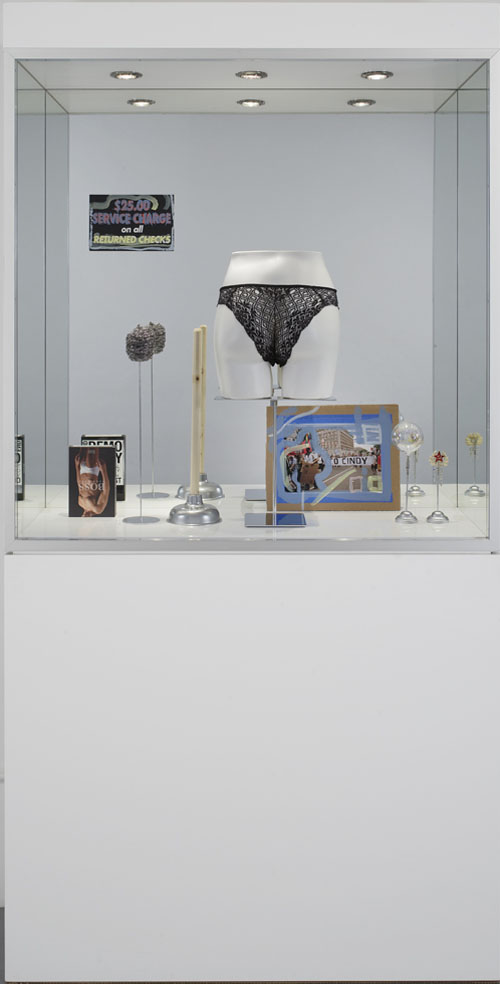
Josephine Meckseper, Talk to Cindy, 2005
Aluminum, Plexiglas, glass, lights, metal display stands, painted toilet plunger, ink jet print mounted on cardboard underwear box, found jewelry, gouache and tape on inkjet print mounted on cardboard, found metal scrubber, found jewelry, glass ball,
226.1 x 116.8 x 45.7 cm

Talk to Cindy
Josephine Meckseper

Josephine Meckseper, Talk to Cindy, 2005
Aluminum, Plexiglas, glass, lights, metal display stands, painted toilet plunger, ink jet print mounted on cardboard underwear box, found jewelry, gouache and tape on inkjet print mounted on cardboard, found metal scrubber, found jewelry, glass ball,
226.1 x 116.8 x 45.7 cm
In her display cases and photographs we see people and things re-objectified, symbolically removed from their original, all too familiar mediated contexts, and rearranged into self-consciously mirrored window dressing. ‘Yes, the mirror and chrome sculptures, glass-and-steel vitrines, and mirror slatwalls are not affirmations or glorifications of consumerism,’ Meckseper says. ‘Their shiny surfaces are meant as provocations for destruction. They are designed to be targets, like high-end shop windows being smashed during riots and protests. These works mimic retail aesthetics in order to activate the commercial zone into a political one.’

Untitled
Josephine Meckseper
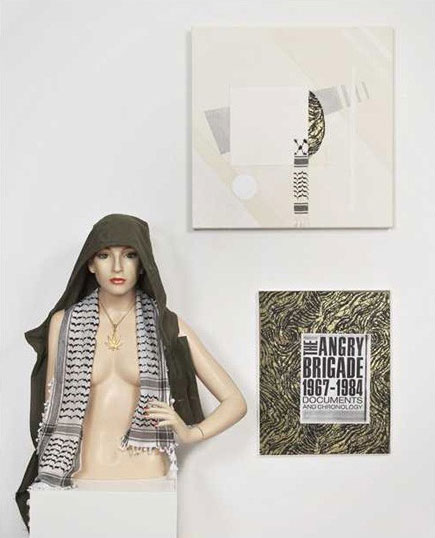
Josephine Meckseper, Untitled, 2005
Mannequin, fabric, found jewelry, inkjet print on fabric, acrylic and fabric on canvas.
Mannequin: 144.8 x 66 x 43.8 cm
Painting: 61 x 61 cm
Collage: 41 x 41 cm
Josephine Meckseper’s Untitled (%) is a witty exposé of cultural consumption. In a composition set on designer shelves, Meckseper literally conceives the gallery as a display unit, where culture becomes commodity, ideas are bought and sold, and art objects are flogged as products of luxury. Framing art as an extension of lifestyle ephemera, paintings sit too easily between sales counter gimmicks and embarrassing merchandise, satirising both art world vacuity and the anxieties of cultural assimilation.


